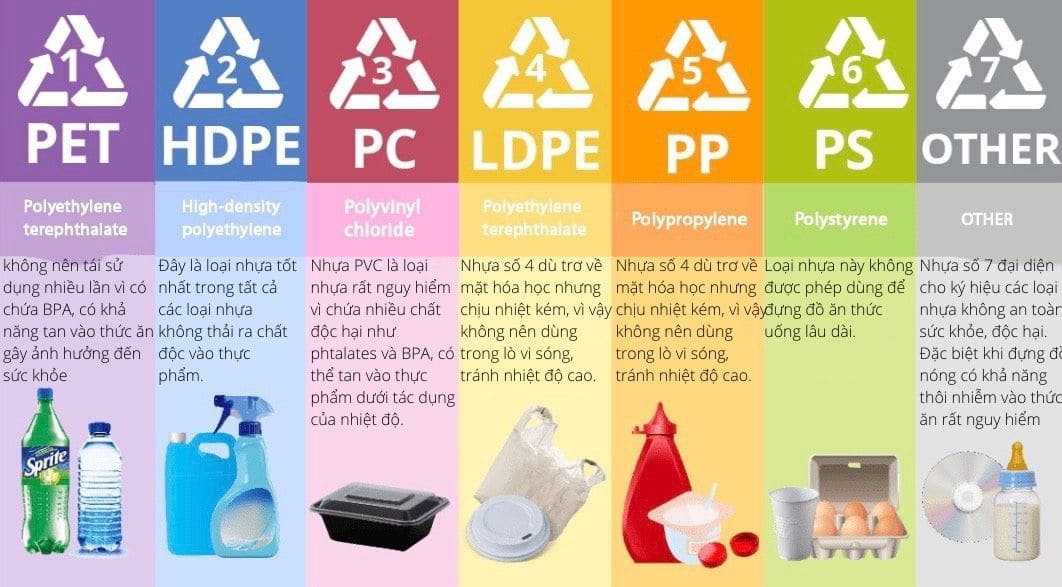PET plastic
PETE or PET (Polyethylene terephthalate). It used to be called Dacron. It is a clear, strong, lightweight plastic. Almost all 2-liter soda and water bottles sold in the US are made from PET. It is also used to package salad dressings, cooking oils, window cleaners, shampoos, mouthwashes, liquid hand soaps, and peanut butter.

HDPE
This is the plastic identification code for (HDPE) High Density Polyethylene. HDPE is a thermoplastic made from petroleum. It is a very flexible plastic material. HDPE plastic is used in many applications, including colored plastic bottles. It is used to make most colored containers such as detergent bottles. Additionally, HDPE is used to make milk bottles, shampoo bottles, bleach bottles, cutting boards, and pipes. It has impact resistance as well as high melting temperature.
PVC
Polyvinyl clorua PVC or vinyl is a widely used plastic. But Polyvinyl Chloride cannot be recycled. PVC is used in the construction industry to produce doors and windows. It is also used in wire and cable installation in addition to windshield system details. PVC is also used to make drinking water and wastewater pipes. Additionally, this plastic is made into medical devices, blood bags, medical tubing, as well as toys, bottle caps, and carpets. Etc. This is the third most used plastic in the world after polyethylene and polypropylene.
LDPE
This is the plastic identification code for (LDPE) Low Density Polyethylene. LDPE clear or translucent. It is flexible, as well as chemical and water resistant. Low-density polyethylene is used to make a variety of products including dry cleaning bags, produce bags, plastic trash bags, and plastic wrap and film. Additionally, LDPE is used to produce injection molded parts. It is not usually recycled.
Polypropylene
Polypropylene (PP) The triangle for polypropylene will have the number 5 in it. PP has a high melting point, so it is often used to make containers that can hold hot liquids. It is gradually being accepted by recyclers. PP is used to make potato chip bags and bags inside cereal boxes. Polypropylene used to make food containers for sour cream, yogurt, and margarine. It is also used to make bottle caps and mats as well as syrup and medicine bottles.
Polystyrene
PS has a resin identification code of 6. You will recognize this as the material your coffee cups are made from. However, polystyrene is often not recycled and accounts for 35% of landfill materials.
Other types of plastic
Number seven includes nylon, poly-carbonate and acrylic. Additionally, it includes a resin that is new to the codes as well as multiple layers of combinations of several different resins. Additionally, number seven includes poly-lactic acid or PLA, a recently developed plastic derived from corn. PLA is not typically recycled. Number 7 is a unique plastic identifier that represents a group of plastics. However, some of these plastics can be recycled and some cannot. Therefore, an item marked with the number seven should not be placed in the recycling bin.
How to find codes on products
Sometimes the plastic identification code is molded into the product itself. It is sometimes found on the product's label. So, before deciding to throw something in the recycling bin, be sure to check that there is a triangle on it and that the number inside is 1,2, 4-5. As we know 3, 6 and 7 cannot be recycled. This is not a regulated system. However, without that code, plastic sorters will not know exactly what purpose the plastic is used for and whether it can be recycled or not.






